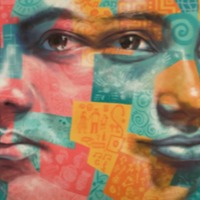
Zoey
There are an estimated 17,000 people living in conditions of slavery in Canada (GSI 2018). Both Canadian and foreign citizens are exploited in forced labour and sex trafficking. Forced labour affects migrant workers under ‘low-skilled’ temporary visa streams including the low-wage and primary agricultural streams. These workers are often in restaurants, hotels, agriculture, food preparation, construction or domestic work. Sexual exploitation of Canadian citizens is the most common form of slavery detected by authorities in the country, with 93% of sex trafficking victims being Canadian. Zoey* talks about her experience of being trafficked for sexual exploitation.
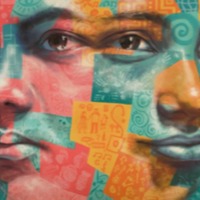
Chenda
There are an estimated 261,000 people living in modern slavery in Cambodia (GSI 2018). All of Cambodia's 25 provinces are sources for human trafficking. Cambodian women and girls move from rural areas to cities and tourist destinations where they are subjected to sex trafficking in brothels, beer gardens, massage parlors and salons. Cambodian men form the largest source of demand for children exploited in prostitution, although men from across the world travel to the country to engage in child sex tourism. Chenda* was trafficked for sexual exploitation at the age of thirteen. Her pimp also forced her to sell drugs and steal from customers. She was beaten and subjected to torture if she did not earn enough each night.

Sarah
There are an estimated 403,000 people living in modern slavery in the United States (GSI 2018). Sex trafficking exists throughout the country. Traffickers use violence, threats, lies, debt bondage and other forms of coercion to compel adults and children to engage in commercial sex acts against their will. The situations that sex trafficking victims face vary, many victims become romantically involved with someone who then forces them into prostitution. Others are lured with false promises of a job, and some are forced to sell sex by members of their own families. Victims of sex trafficking include both foreign nationals and US citizens, with women making up the majority of those trafficked for the purposes of commercial sexual exploitation. In 2015, the most reported venues/industries for sex trafficking included commercial-front brothels, hotel/motel-based trafficking, online advertisements with unknown locations, residential brothels, and street-based sex trafficking. Sarah grew up in California. Her cousin was the leader of a gang and its members were often guarding the house. One of the gang members abused Sarah as a child and when her cousin found out, he was forced to retaliate, and Sarah now owed him. After this incident, she became a source of income and was put to work trafficking drugs. One day, her cousin bought her new dresses, took photos of her to sell to older men. When Sarah tried to seek help at school, she was locked up for a week as punishment. Later, when she was seventeen, Sarah’s cousin was arrested and though she was free from his control, she had nowhere to go and she was soon trafficked again by an old friend into adult entertainment. When she was 23, Sarah stole her second trafficker’s car keys and escaped. After living a life of abuse, trafficking, and drug abuse, Sarah struggled to go about ‘normal life.’ She talks about her journey overcoming her trauma and moving forward.
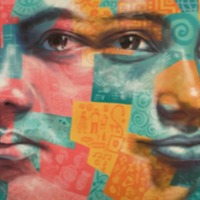
Phalla
There are an estimated 261,000 people living in modern slavery in Cambodia (GSI 2018). All of Cambodia's 25 provinces are sources for human trafficking. Cambodian women and girls move from rural areas to cities and tourist destinations where they are subjected to sex trafficking in brothels, beer gardens, massage parlors and salons. Cambodian men form the largest source of demand for children exploited in prostitution, although men from across the world travel to the country to engage in child sex tourism. Phalla was trafficked for sex at the age of 20, in Cambodia. She was sold to a brothel by her grandmother.
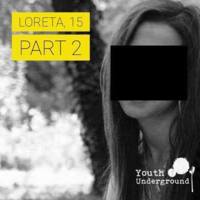
Loreta
There are an estimated 17,000 people living in modern slavery in Lithuania and 145,000 in Italy (GSI 2018). Lithuanian people are trafficked within the country and abroad. Men and boys are exploited in forced criminal activity such as shoplifting, and women and girls in commercial sex. Italy is a destination, transit, and source country for women, children, and men subjected to sex trafficking and forced labour. Victims originate from Nigeria, Romania, Morocco, China, and other countries. Female victims are often subjected to sex trafficking in Italy after accepting promises of employment as dancers, singers, models, restaurant servers, or caregivers. Romanian and Albanian criminal groups force Eastern European women and girls into commercial sex. Loreta experienced physical abuse as a child in a children’s home. She turned to drugs at thirteen years old. The only visitor she had at the home was a man who claimed to be her Godfather. He promised she could live with him when she turned fifteen and could legally leave the home. But he had previously raped her and when she was forced to live with him, her drug abuse increase. Shortly after, Loreta was trafficked into prostitution by a woman claiming to be her sister. When she was seventeen, she was told that pimp wanted to sell her abroad. She was taken to Italy. She was eventually able to escape after seeking help from a Lithuanian man who called the police.
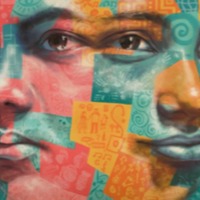
Kolab
There are an estimated 261,000 people living in modern slavery in Cambodia (GSI 2018). All of Cambodia's 25 provinces are sources for human trafficking. Cambodian women and girls move from rural areas to cities and tourist destinations where they are subjected to sex trafficking in brothels, beer gardens, massage parlors and salons. Cambodian men form the largest source of demand for children exploited in prostitution, although men from across the world travel to the country to engage in child sex tourism. When Kolab was seven years old he was told that he had been sold to the people he thought were his parents. At 13, he was sent to Phom Penh where he stayed with two men who offered him a place to live. These men introduced Kolab to another man who forced Kolab into commercial sexual exploitation. He was drugged, raped, and filmed having sex with other men. He was forced to sell drugs and steal and subjected to beatings and torture if he didn’t make enough money.
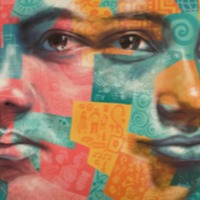
Kartika
There are an estimated 403,000 people living in modern slavery in the United States (GSI 2018). Sex trafficking exists throughout the country. Traffickers use violence, threats, lies, debt bondage and other forms of coercion to compel adults and children to engage in commercial sex acts against their will. The situations that sex trafficking victims face vary, many victims become romantically involved with someone who then forces them into prostitution. Others are lured with false promises of a job, and some are forced to sell sex by members of their own families. Victims of sex trafficking include both foreign nationals and US citizens, with women making up the majority of those trafficked for the purposes of commercial sexual exploitation. In 2015, the most reported venues/industries for sex trafficking included commercial-front brothels, hotel/motel-based trafficking, online advertisements with unknown locations, residential brothels, and street-based sex trafficking. Kartika* was twenty-four when she was flown from Indonesia to the United States by a recruitment agent. Upon arriving in New York, she was trafficked for commercial sexual exploitation. He passport and documents were taken, and she was told she had to pay off her travel costs
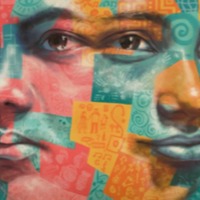
Kelly
There are an estimated 403,000 people living in modern slavery in the United States (GSI 2018). Sex trafficking exists throughout the country. Traffickers use violence, threats, lies, debt bondage and other forms of coercion to compel adults and children to engage in commercial sex acts against their will. The situations that sex trafficking victims face vary, many victims become romantically involved with someone who then forces them into prostitution. Others are lured with false promises of a job, and some are forced to sell sex by members of their own families. Victims of sex trafficking include both foreign nationals and US citizens, with women making up the majority of those trafficked for the purposes of commercial sexual exploitation. In 2015, the most reported venues/industries for sex trafficking included commercial-front brothels, hotel/motel-based trafficking, online advertisements with unknown locations, residential brothels, and street-based sex trafficking. Kelly* was separated from her friends and family, introduced to drugs and trafficked for commercial sexual exploitation by a man who was initially nice to her.
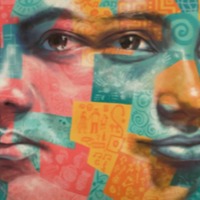
Clara
There are an estimated 403,000 people living in modern slavery in the United States (GSI 2018). Sex trafficking exists throughout the country. Traffickers use violence, threats, lies, debt bondage and other forms of coercion to compel adults and children to engage in commercial sex acts against their will. The situations that sex trafficking victims face vary, many victims become romantically involved with someone who then forces them into prostitution. Others are lured with false promises of a job, and some are forced to sell sex by members of their own families. Victims of sex trafficking include both foreign nationals and US citizens, with women making up the majority of those trafficked for the purposes of commercial sexual exploitation. In 2015, the most reported venues/industries for sex trafficking included commercial-front brothels, hotel/motel-based trafficking, online advertisements with unknown locations, residential brothels, and street-based sex trafficking. Clara* was trafficked at eighteen years old by a man she thought loved her. She was sent to Connecticut where she was forced to work long hours being sexually exploited.
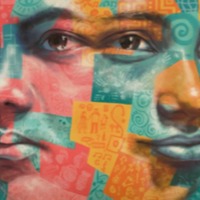
Stephanie
There are an estimated 403,000 people living in modern slavery in the United States (GSI 2018). Sex trafficking exists throughout the country. Traffickers use violence, threats, lies, debt bondage and other forms of coercion to compel adults and children to engage in commercial sex acts against their will. The situations that sex trafficking victims face vary, many victims become romantically involved with someone who then forces them into prostitution. Others are lured with false promises of a job, and some are forced to sell sex by members of their own families. Victims of sex trafficking include both foreign nationals and US citizens, with women making up the majority of those trafficked for the purposes of commercial sexual exploitation. In 2015, the most reported venues/industries for sex trafficking included commercial-front brothels, hotel/motel-based trafficking, online advertisements with unknown locations, residential brothels, and street-based sex trafficking. Stephanie* was trafficked by her friend’s father for commercial sexual exploitation. The men that raped her threatened her if she said anything. Her exploitation led her to addiction and prostitution.
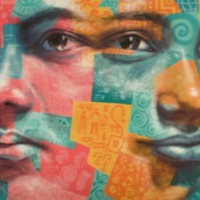
Brian
There are an estimated 403,000 people living in modern slavery in the United States (GSI 2018). Sex trafficking exists throughout the country. Traffickers use violence, threats, lies, debt bondage and other forms of coercion to compel adults and children to engage in commercial sex acts against their will. The situations that sex trafficking victims face vary, many victims become romantically involved with someone who then forces them into prostitution. Others are lured with false promises of a job, and some are forced to sell sex by members of their own families. Victims of sex trafficking include both foreign nationals and US citizens, with women making up the majority of those trafficked for the purposes of commercial sexual exploitation. In 2015, the most reported venues/industries for sex trafficking included commercial-front brothels, hotel/motel-based trafficking, online advertisements with unknown locations, residential brothels, and street-based sex trafficking. Brian* was trafficked by his dad when he was eleven years old. He was taken to an old house for child sexual exploitation. He was locked in a basement and raped, drugged, and beaten by different men.

Jana
There are an estimated 5,000 people living in modern slavery in Slovenia (GSI 2018). Traffickers exploit foreign workers and undocumented migrants vulnerable to labour trafficking in forced begging, domestic servitude, and in construction, transportation, and hospitality. Women and children from Slovenia, Eastern European, Western Balkan, Southeast Asian, and Latin American countries to sex trafficking within Slovenia, and many also transit to Western Europe, primarily Italy and Germany, where they are at risk of sexual and labour exploitation. Ethnic Roma are particularly vulnerable to trafficking in Slovenia. Jana was trafficked at the age of 13 in Slovenia by a friend who had arranged a job interview for her. During the interview she was kidnapped, raped and forced into prostitution.

Rebecca
There are an estimated 403,000 people living in modern slavery in the United States (GSI 2018). Sex trafficking exists throughout the country. Traffickers use violence, threats, lies, debt bondage and other forms of coercion to compel adults and children to engage in commercial sex acts against their will. The situations that sex trafficking victims face vary, many victims become romantically involved with someone who then forces them into prostitution. Others are lured with false promises of a job, and some are forced to sell sex by members of their own families. Victims of sex trafficking include both foreign nationals and US citizens, with women making up the majority of those trafficked for the purposes of commercial sexual exploitation. In 2015, the most reported venues/industries for sex trafficking included commercial-front brothels, hotel/motel-based trafficking, online advertisements with unknown locations, residential brothels, and street-based sex trafficking. Rebecca was trafficked in Indiana, USA when she was twenty-one-years old. After being sexually assaulted at the age of fourteen, Rebecca began acting out and struggled with depression, anxiety, and began experimenting with drugs and alcohol. When she was twenty-one, she met a man almost twice her age and moved in with him just three weeks later. The man introduced her to crystal meth, controlled her movement and sold her to men for sex. Rebecca tells of how, despite leaving her trafficking situation, she struggled to come to terms with her exploitation and it affected her life for years afterwards
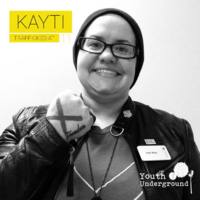
Kayti
There are an estimated 403,000 people living in modern slavery in the United States (GSI 2018). Sex trafficking exists throughout the country. Traffickers use violence, threats, lies, debt bondage and other forms of coercion to compel adults and children to engage in commercial sex acts against their will. The situations that sex trafficking victims face vary, many victims become romantically involved with someone who then forces them into prostitution. Others are lured with false promises of a job, and some are forced to sell sex by members of their own families. Victims of sex trafficking include both foreign nationals and US citizens, with women making up the majority of those trafficked for the purposes of commercial sexual exploitation. In 2015, the most reported venues/industries for sex trafficking included commercial-front brothels, hotel/motel-based trafficking, online advertisements with unknown locations, residential brothels, and street-based sex trafficking. Kayti was trafficked at 11 in the United States. She had experienced sexual abuse at home since the age of two and later, her father took her to a house where she was subjected to child commercial sexual exploitation. Kayti’s exploitation continued until she was twenty-eight years old at which point, she reached out for help.
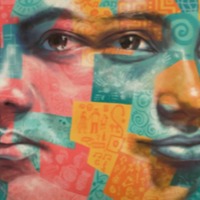
Jasmine
There are an estimated 403,000 people living in modern slavery in the United States (GSI 2018). Sex trafficking exists throughout the country. Traffickers use violence, threats, lies, debt bondage and other forms of coercion to compel adults and children to engage in commercial sex acts against their will. The situations that sex trafficking victims face vary, many victims become romantically involved with someone who then forces them into prostitution. Others are lured with false promises of a job, and some are forced to sell sex by members of their own families. Victims of sex trafficking include both foreign nationals and US citizens, with women making up the majority of those trafficked for the purposes of commercial sexual exploitation. In 2015, the most reported venues/industries for sex trafficking included commercial-front brothels, hotel/motel-based trafficking, online advertisements with unknown locations, residential brothels, and street-based sex trafficking. Jasmine was trafficked at the age of 18 in Connecticut, USA. She grew up in Saugus and Revere, where she started dating a man who coerced her into sex trafficking.
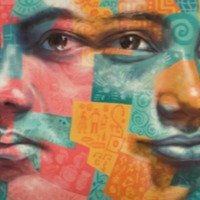
Bianca
There are an estimated 403,000 people living in modern slavery in the United States (GSI 2018). Sex trafficking exists throughout the country. Traffickers use violence, threats, lies, debt bondage and other forms of coercion to compel adults and children to engage in commercial sex acts against their will. The situations that sex trafficking victims face vary, many victims become romantically involved with someone who then forces them into prostitution. Others are lured with false promises of a job, and some are forced to sell sex by members of their own families. Victims of sex trafficking include both foreign nationals and US citizens, with women making up the majority of those trafficked for the purposes of commercial sexual exploitation. In 2015, the most reported venues/industries for sex trafficking included commercial-front brothels, hotel/motel-based trafficking, online advertisements with unknown locations, residential brothels, and street-based sex trafficking. Bianca began speaking to a man she had met online and when she turned sixteen, she left home and travelled to see him. She went to Vegas where the man trafficked her into prostitution. He threatened to kill anyone that tried to take her home and forced Bianca to start taking drugs. She was finally able to leave and later heard that he had been arrested.

Ali
There are an estimated 403,000 people living in modern slavery in the United States (GSI 2018). Sex trafficking exists throughout the country. Traffickers use violence, threats, lies, debt bondage and other forms of coercion to compel adults and children to engage in commercial sex acts against their will. The situations that sex trafficking victims face vary, many victims become romantically involved with someone who then forces them into prostitution. Others are lured with false promises of a job, and some are forced to sell sex by members of their own families. Victims of sex trafficking include both foreign nationals and US citizens, with women making up the majority of those trafficked for the purposes of commercial sexual exploitation. In 2015, the most reported venues/industries for sex trafficking included commercial-front brothels, hotel/motel-based trafficking, online advertisements with unknown locations, residential brothels, and street-based sex trafficking. Ali was trafficked at the age of 22, in Philadelphia, USA. Heroin addiction led to Ali living on the streets, to prostitution and ultimately, to being trafficked. She was on the streets for five years. This is her story in her own words.
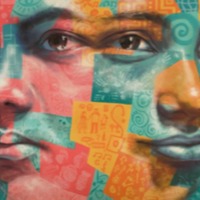
Thiri
There are an estimated 212,000 people living in modern slavery in Malaysia (GSI 2018). The majority of those exploited are migrant and undocumented workers in the country. Foreign workers constitute more than 20 percent of the Malaysian workforce and typically migrate voluntarily—often illegally—to Malaysia from Bangladesh, India, Nepal, Burma, Indonesia, the Philippines, and other Southeast Asian countries, mostly in pursuit of better economic opportunities. Some of these migrants are subjected to forced labour or debt bondage by their employers, employment agents, or informal labour recruiters when they are unable to pay the fees for recruitment and associated travel. Thiri came to Malaysia in 2007 from Myanmar without documents. He was brought to immigration officials and was told he was being deported to the Thai-Malaysian border. However, he was forced into the back of a vehicle and taken to a house where traffickers demanded money to go back to Malaysia. Those that could not pay, including Thiri were kept in the house and threatened with forced labour. Thiri and six others tried to escape and have the traffickers arrested but police were involved in the trafficking and they were taken back to the house where they were being kept. Thiri was forced to cook and clean, sell drugs, and become the traffickers’ ‘bodyguard,’ beating new arrivals who also could not pay the fee to return to Malaysia. Eventually Thiri was able to escape.
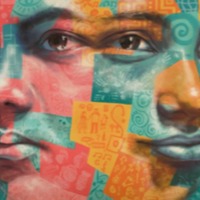
Rebekah Begay
There are an estimated 403,000 people living in modern slavery in the United States (GSI 2018). Sex trafficking exists throughout the country. Traffickers use violence, threats, lies, debt bondage and other forms of coercion to compel adults and children to engage in commercial sex acts against their will. The situations that sex trafficking victims face vary, many victims become romantically involved with someone who then forces them into prostitution. Others are lured with false promises of a job, and some are forced to sell sex by members of their own families. Victims of sex trafficking include both foreign nationals and US citizens, with women making up the majority of those trafficked for the purposes of commercial sexual exploitation. In 2015, the most reported venues/industries for sex trafficking included commercial-front brothels, hotel/motel-based trafficking, online advertisements with unknown locations, residential brothels, and street-based sex trafficking. Rebekah Begay was sexual abused at a young age by her family and by her first boyfriend. Begay developed a drug addiction and ran away, flying to Atlanta to live with her sister. When she was 16 years old, Begay met a man on a dating website, but after a few months he took her to a house and sold her into prostitution. She was able to run away when one of the men she had been sold to was distracted but the experience had lasting effects.
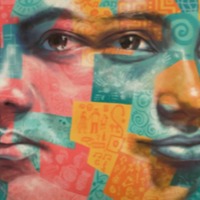
Haima G.
There are an estimated 61,000 people living in modern slavery in Saudi Arabia (GSI 2018). It is a source and destination country for men and women trafficked from South and South East Asia and Africa. People voluntarily migrate to the country to work in a variety of sectors including construction and domestic service; many of these workers are vulnerable to forced labour. Traffickers and brokers often illegally recruit migrants to work in Saudi Arabia and subsequently forced them into domestic servitude or debt bondage. Female domestic workers are particularly at risk of trafficking due to their isolation inside private residences. Non-payment or late payment of wages remains a complaint from foreign workers, while employer's withholding of worker's passports remains a significant problem. Trafficking perpetrators include businesses of all sizes, private families, recruitment companies in both Saudi Arabia and labor-sending countries and organized criminal elements. Haima G. travelled to Saudi Arabia for work to help her family. Relatives deceived Haima G. about her promised job abroad. Her agent sexually harassed her, and her employer threatened to return her to her abusive agent if she complained. Her employer sexually assaulted her, retained her passport, and locked her in the workplace so that she could not escape.